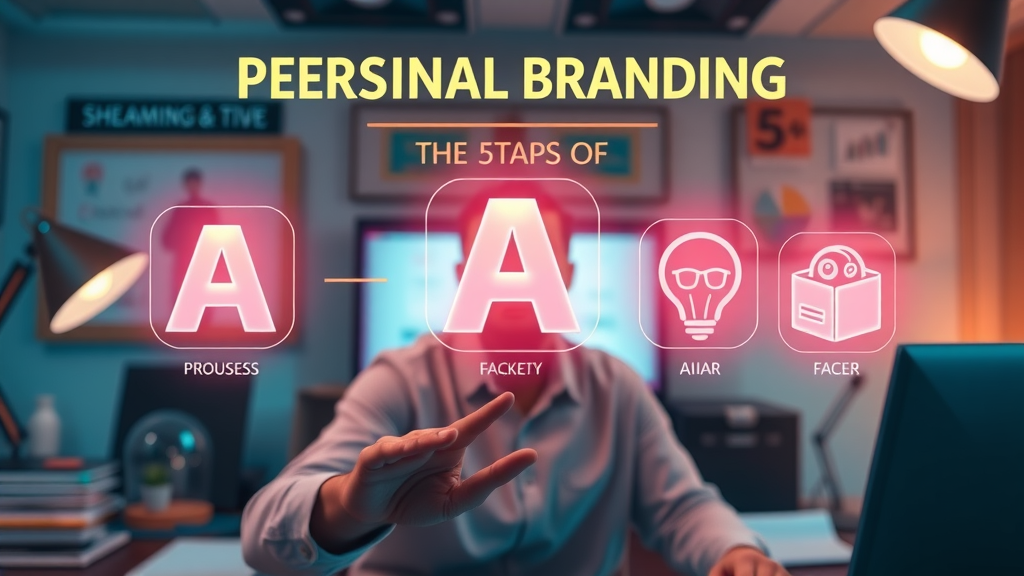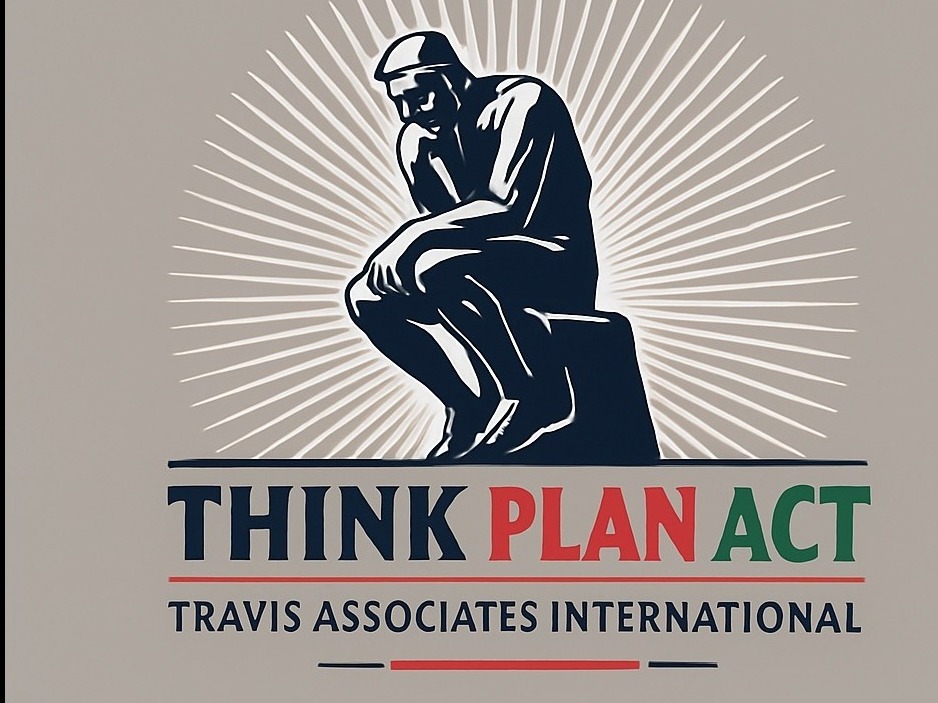- Ever wondered why some professionals' personal brands shine while others fade into obscurity? Discover the secret to avoiding the most common—and costly—error in personal branding that could make or break your career.

Personal Branding: Why it Matters for Modern Professionals
In today's fast-paced digital age, personal branding sets thriving professionals apart from the crowd. Whether you’re a seasoned executive, a creative entrepreneur, or a rising software developer, your personal brand helps you stand out, builds credibility, and shapes your professional trajectory. Unlike a corporate brand, a personal brand encompasses your skills, values, and reputation—showcasing what makes you unique to your target audience .
Many mistakenly believe that personal branding only benefits influencers or C-level leaders. However, every professional—regardless of level—needs to invest in building a personal brand. Why? Because your personal brand is your career’s backbone, often influencing hiring decisions, partnership opportunities, and how colleagues and clients perceive you. Personal brands open doors to new roles and foster trust, especially when your online presence and offline persona align. A strong personal brand is no longer a luxury; it’s a necessity in an interconnected, digital-first world.
Defining Personal Branding: What Sets a Strong Personal Brand Apart?
Personal branding is more than a catchy logo or well-designed portfolio. At its core, it’s how you consistently communicate your strengths, passions, and values across every platform—be it a LinkedIn profile, a personal website, or social media. A strong personal brand accurately reflects both your professional and personal attributes, allowing you to create a brand narrative that attracts your ideal audience.
What distinguishes a strong personal brand from a weak one is authenticity and focus. A well-crafted personal brand goes beyond appearances, consistently delivering value and establishing authority in your niche. By strategically sharing your expertise, thought leadership, and achievements, you create lasting impressions that endure shifts in the job market or changes in your career. Remember, your brand isn’t just what you say—it’s how others perceive you.
The Cost of Ignoring Personal Branding in Your Career
Overlooking personal branding can have a quiet but profound impact on your career trajectory. Inconsistent or neglected personal branding might leave you overlooked for promotions, forgotten by recruiters, or even mistrusted by clients. In today’s hyper-connected world, people often search your name before meeting you—meaning your online presence acts as your first impression.
Without a clear and compelling personal brand, your story gets lost amid competitors, and confusion may arise about your professional purpose. Clients and colleagues may question your credibility or be less inclined to engage with you. By investing time and effort into building a personal brand , you protect your professional reputation and open yourself to advancement—and even thought leadership opportunities.
Create a Personal Brand for Competitive Advantage
If you want to get ahead, you need to create a personal brand that differentiates you from others in your industry. This strategic positioning helps you target the right audience, attract meaningful opportunities, and build trust. Whether through engaging content on social media, a compelling LinkedIn profile, or appearances at industry events, every touchpoint should reinforce your value.
Your brand helps you build relationships and adapt to industry trends. Don’t think of personal branding as a one-time project—it’s a continuous process where consistency and authenticity pay long-term dividends.
"Your brand is what people say about you when you're not in the room." – Jeff Bezos

Critical Mistake in Personal Branding: Lacking Consistency Across Your Online Presence
Among all the possible missteps in personal branding , a lack of consistency is the most damaging—and easily overlooked. If your social media profiles, LinkedIn profile, and digital portfolio present conflicting messages or visuals, you risk undermining your credibility and losing trust with your audience. Inconsistent branding not only confuses potential employers or collaborators, but also dilutes your perceived expertise.
Consistent branding creates a cohesive experience for anyone searching for you online. Everything from your professional photo to your value proposition should align across platforms. This consistency reinforces your authority and helps you stay top-of-mind in a competitive landscape. Set yourself apart by ensuring your online presence accurately reflects who you are and what you offer, every time.
How Inconsistent Personal Branding Damages Your Reputation
When your personal brand differs from one profile or post to another, you’re not just missing a marketing opportunity—you’re actively harming your reputation. Potential employers, clients, or collaborators may question your reliability if they notice discrepancies in your messaging or presentation. They may wonder if you’re indecisive, inauthentic, or lacking in attention to detail.
For example, a LinkedIn profile promoting you as an industry expert, while your Twitter feed features off-brand jokes or outdated content, weakens your professional presence. Such mismatches can also erode the trust you’ve built, making it harder to re-establish consistency later. Ensuring that your personal branding elements—voice, visual identity, and values—are harmonized will strengthen your professional narrative and bolster your credibility.
Case Studies: Rebuilding a Personal Brand After Mistakes
Even top performers are not immune to personal branding blunders. Consider the case of a mid-level executive whose online presence included both professional achievements and polarizing personal opinions. Following pushback from partners and missed promotions, she cleaned up her digital footprint, clarified her messaging, and experienced a career resurgence. Similarly, emerging thought leaders have salvaged reputations by realigning their content and values across all media platforms , illustrating that recovery is possible with deliberate rebranding efforts.
The key takeaway: If you’ve made personal branding errors, you’re not alone. What matters is recognizing, correcting, and consistently presenting the new (and true) you—across every platform where your name appears.
| Aspect | Consistent Branding | Inconsistent Branding |
|---|---|---|
| Audience Trust | High – builds strong rapport and credibility | Low – creates uncertainty and distrust |
| Professional Opportunities | Frequent – perceived as reliable and authoritative | Rare – overlooked due to unclear messaging |
| Online Presence | Cohesive and memorable | Fragmented and forgettable |
| Brand Growth | Sustainable and scalable | Stagnant or declining |
Step-by-Step Process to Build a Personal Brand that Endures
Building a personal brand isn’t just posting pretty pictures on your favorite media platform ; it’s a thoughtful, multi-step process that integrates authenticity, authority, and strategy. Start by identifying your core values, unique strengths, and the message you want your brand to convey. Then, align all aspects of your online presence to foster a memorable experience for your target audience. Regularly review and refine your strategy to ensure that as your career evolves, your brand evolves too.
The best personal brands are those that adapt and improve continuously. Whether you’re targeting a new industry, tackling a career shift, or simply improving your current standing, following a step-by-step process will maximize your results and minimize costly mistakes.
How to Build Your Personal Brand on Social Media
Social media is the fastest and most effective way to amplify your voice and reach your target audience. Start by selecting platforms where your industry peers and potential employers congregate, then create high-quality, valuable content that showcases your skills and expertise. Leverage features like live videos, carousel posts, and stories to engage your audience and invite meaningful interaction.
Remember, consistency is vital—use the same profile photo, tone of voice, and branded visuals on every media platform. Cross-share your content thoughtfully and interact genuinely with comments and messages. When building a personal brand, think long-term: the connections you make today will support your career growth for years to come.

Building a Personal Brand: Leveraging LinkedIn Profile Essentials
Your LinkedIn profile is your digital resume and networking powerhouse for personal branding success. Ensure your profile includes a professional headshot, a compelling headline, and an engaging summary that captures your story. Highlight your top achievements and relevant skills, using keywords your target audience might search for.
Actively share content, endorse colleagues, and participate in industry groups. Your engagement will drive profile views, establish your authority, and build trust with connections. Even if you have profiles on other media platforms , your LinkedIn profile should be the gold standard—reflecting your authentic brand with clarity and consistency.
Online Presence: Crafting an Image That Aligns with Your Values
A powerful online presence is the intersection of who you are and how the digital world perceives you. Audit your existing profiles and content, removing anything that contradicts your brand message or values. Next, curate content—from blog posts to project case studies—that showcases your personality and expertise.
When creating a personal brand, align your online image with your offline behavior. Authenticity breeds loyalty, so ensure your actions support your online claims. Whether you’re writing a guest post, speaking at a conference, or mentoring new talent, every action counts toward building a personal brand that endures.
Strong Personal Brand: Aligning Offline and Online Strategies
Many make the mistake of thinking personal branding is purely digital. In reality, your offline reputation—how you interact in meetings, at industry events, or even in casual conversations—should reinforce your online narrative. Attend events related to your niche, offer help to colleagues, and follow through on promises. Then, share these experiences online to create a feedback loop between your digital and real-world presence.
Consistency between your online and offline presence increases credibility, allowing people to trust that what they see is what they’ll experience. This alignment is what transforms a good personal brand into a strong personal brand—and builds momentum that propels your career.
Key Elements to Create a Personal Brand: 5 A's, 7 Pillars, and 4 C's
The foundation of a successful personal brand lies in proven frameworks. The 5 A's , 7 Pillars , and 4 C's offer simple yet powerful checklists to structure your strategy for building a personal brand that withstands trends and changes.
Understanding the 5 A's of Personal Branding
To build trust and credibility, focus on the 5 A’s: Authenticity, Authority, Aspiration, Appearance, and Audience. Authenticity means staying true to your story and values. Authority is about demonstrating expertise in your field. Aspiration drives your forward-thinking vision, while Appearance covers the visual identity—from graphic design to wardrobe—that reinforces your reputation. Finally, Audience means understanding who you want to reach with your message.

Exploring the 7 Pillars of Personal Branding for Success
The 7 pillars of personal branding are Clarity, Consistency, Content, Community, Connection, Confidence, and Credibility. Clarity means having a focused message; Consistency keeps your brand dependable; Content provides value; Community fosters engagement; Connection increases reach; Confidence empowers you to share boldly; and Credibility secures trust in your field.
These pillars form the backbone of long-term personal branding success. By nurturing each one, you create a personal brand that’s sustainable, scalable, and resilient against market changes.
Integrating the 4 C's into Your Personal Branding Plan
The 4 C’s —Clarity, Consistency, Constancy, and Communication—are your guideposts for daily decisions in building a personal brand. Keep your brand message clear and unambiguous, ensure consistency across all touchpoints, remain constant in your activity, and communicate with your audience regularly. This approach guarantees that your audience knows what to expect—and trusts in your expertise.
By blending the 4 C’s with the 5 A’s and 7 Pillars, you embrace a holistic strategy that covers both the art and science of personal branding.
Checklist: Build a Personal Brand Using the A's, Pillars, and C's Framework
- Define your authentic story and unique strengths
- Audit your online presence for consistency
- Create and share value-driven content regularly
- Engage with your community and build meaningful connections
- Maintain a memorable appearance and visual brand identity
- Communicate confidently across all media platforms
- Measure your credibility through feedback and endorsements
Common Misconceptions That Can Sabotage Your Personal Branding
Misconceptions about personal branding are everywhere, often causing professionals to self-sabotage or miss key opportunities. Let’s debunk the most common myths that hinder personal branding success.
Myth: Personal Branding Is Only for Influencers
Many assume that only influencers or celebrities need a personal brand. In reality, everyone in today’s digital economy can benefit from building a personal brand . From recent graduates to seasoned managers, a strong personal brand helps you stand out and move ahead, even in the most competitive fields.
Myth: You Can Build a Personal Brand Overnight
Instant results are rare in personal branding. It takes planning, self-reflection, and patience to build a personal brand that’s both authentic and respected. True thought leaders spend years crafting their brand, evolving as industries and audiences change.

Myth: Personal Branding Is All About Online Presence Only
While your online presence is crucial, the best personal brands are supported by strong offline reputations. People notice how you treat others, your teamwork, and your integrity—both on and off social media. Balancing both worlds is the surest path to a robust, lasting personal brand.
Practical Tips to Build a Strong Personal Brand in 2024
This year, personal branding continues to evolve, driven by new technologies, media platforms, and changing workplace norms. Staying ahead means regularly updating your skills, expanding your network, and fine-tuning your strategy.
Actionable Steps to Build Your Personal Brand From Scratch
- Clarify your values, strengths, and target audience
- Audit current personal and professional accounts
- Choose the most relevant media platform(s)
- Create content that reflects your expertise and passions
- Engage authentically with your network
- Ask for recommendations and feedback
- Track metrics—views, shares, endorsements—to measure growth
How to Maintain and Grow a Personal Brand Long-Term
Consistency is key for personal branding longevity. Schedule regular check-ins to update profiles, refresh your content strategy, and pivot as needed. Expand your reach by sharing success stories, participating in new communities, and learning from industry leaders. Seek out honest feedback, and never stop adapting.
Remember to balance promotion with humility—showcase results, but also highlight collaborative wins and lessons learned.
Tools and Resources for Personal Branding Success
Invest in the right tools to maximize your branding efforts. Use professional graphic design apps to fine-tune your visual identity, analytics dashboards to track online presence growth, and social media schedulers to maintain regular posting. Consider courses on communication, thought leadership, or media platform best practices for continual improvement.

Dos and Don'ts for Building a Strong Personal Brand
- Do: Be authentic, consistent, proactive, and responsive.
- Don't: Ignore feedback, post irrelevant content, or break promises.
What Makes an Effective LinkedIn Profile for Personal Branding?
Your LinkedIn profile is a cornerstone of your personal brand —often the first point of contact for employers, clients, or collaborators. Optimizing your profile for clarity and value gives you an edge in today’s competitive landscape.
Profile Optimization: Key Sections to Highlight
- Professional photo and branded banner
- Headline that details your expertise
- About section summarizing achievements and goals
- Skills, endorsements, and recommendations
- Featured work, certifications, or published content

Content Strategy: Share Expertise, Thought Leadership, and Value
Regularly share high-impact, industry-relevant content on your profile. Post articles, videos, and infographics that highlight your skills, perspectives, and achievements. Participate in discussions with thoughtful comments to demonstrate your expertise and increase your visibility in your target audience’s feeds.
Consistent, value-driven content positions you as a reliable and forward-thinking professional, further strengthening your personal brand.
Network Building: Growing Your Strong Personal Brand on LinkedIn
Expanding your LinkedIn connections strategically increases your reach and thought leadership. Personalize connection requests, engage with others’ posts, and join industry groups. Cultivate lasting relationships by offering help, collaborating on projects, and giving thoughtful feedback.
Effective network building isn’t about numbers; it’s about quality interactions that reinforce your brand narrative.
Social Media Strategies for Personal Branding
Not all media platforms are created equal for personal branding. Choose ones where your peers, clients, or industry leaders are most active, and tailor your message and visuals for each.
Selecting the Right Platforms for Your Personal Brand
Focus on platforms that align with your goals and audience. LinkedIn is a must for most professionals, but Instagram, Twitter, and even TikTok can offer unique advantages for specific niches. If you’re a software developer, a personal website or GitHub may be key for showcasing projects.
Don’t stretch yourself thin—mastering two or three platforms is better than doing a mediocre job on every media platform.
Consistency in Voice, Visuals, and Values Across Social Media
Keep your tone, colors, and messaging consistent across all social media channels. Use similar profile/cover images, and echo your values in every post and interaction. This cohesiveness ensures a strong personal brand impression, making it easier for your target audience to recognize, remember, and trust you.
Social Media Content Ideas to Build a Personal Brand
- Share professional wins or project case studies
- Post behind-the-scenes stories and lessons learned
- Highlight industry trends and offer expert commentary
- Offer actionable advice and quick tips
- Feature testimonials, recommendations, or collaborations
People Also Ask: Personal Branding Essentials
What is meant by personal branding?
- Personal branding refers to the practice of individuals marketing themselves and their careers as brands. It means curating and communicating your unique professional identity to stand out in your industry.
What are the 5 A's of personal branding?
- The 5 A's are: Authenticity, Authority, Aspiration, Appearance, and Audience. These guiding principles help you build a credible and impactful personal brand.
What are the 7 pillars of personal branding?
- The 7 pillars include: Clarity, Consistency, Content, Community, Connection, Confidence, and Credibility. Mastery of these pillars forms the foundation of long-term personal branding success.
What are the 4 C's of personal branding?
- The 4 C's are: Clarity, Consistency, Constancy, and Communication. They ensure your brand message is strong, clear, and memorable.
Answering Top Questions About Personal Branding
FAQ: How Do I Start Building a Personal Brand?
Begin by assessing your strengths, values, and professional goals. Research your target audience and competitors, then develop a unique value proposition and visual identity. Set up profiles on relevant platforms, share your expertise regularly, and engage genuinely with your network. Regular reviews and updates will ensure your brand stays relevant and effective.

FAQ: What Mistakes Should I Avoid in Personal Branding?
Common mistakes include inconsistency across platforms, ignoring feedback, posting irrelevant or inappropriate content, and failing to update skill sets. Avoid copying others or chasing trends blindly—resume authenticity, value, and clarity as your cornerstones.
FAQ: How Often Should I Update My Online Presence?
Ideally, update your profiles and content quarterly, or more frequently if you achieve major milestones or shifts. Regular updates keep your audience informed, maintain relevance in search results, and reinforce your personal brand's vitality.
FAQ: Can Personal Branding Help Me Land Better Jobs?
Yes! A strong personal brand helps you stand out to recruiters and employers, showcases your skills, and builds trust before interviews even begin. It can open doors to better job offers, promotions, and career shifts by making your expertise and values visible.
Real-World Examples: Personal Branding Done Right
Case Study: Building a Personal Brand from Scratch
Consider Sarah, a software developer who wanted to stand out in her field. By auditing her online presence, refining her portfolio, sharing regular insights on LinkedIn, and speaking at virtual events, she quickly grew her network, attracted new job offers, and became a recognized voice in developer communities. Her journey began with strategic planning and ended with meaningful relationships and professional growth.
Lessons from Industry Leaders in Personal Branding
Successful professionals such as Simon Sinek or Sheryl Sandberg all share one trait: a clear, authentic, and consistent brand message. They continuously provide value, stand for something bigger than themselves, and maintain a strong presence both online and offline. These leaders prove that a personal brand isn’t just a tool—it’s a lifelong asset.
"Brand yourself for the career you want, not the job you have." – Dan Schawbel
Summary: Key Principles to Build a Strong Personal Brand
- Be authentic and bold in telling your story
- Keep your voice, visuals, and values consistent
- Focus on serving your target audience
- Leverage proven frameworks: 5 A’s, 7 Pillars, and 4 C’s
- Update your personal and professional profiles regularly
- Connect your offline actions with your online presence
- Seek feedback and continuously learn
Next Steps: Start Building Your Personal Brand Today
"Personal branding is about managing your name—even if you don't own a business—in a world of misinformation, disinformation, and semi-permanent Google records." – Tim Ferriss
Let's Discuss Your Personal Branding Goals
- Ready to create a strong personal brand and avoid common mistakes? Let's have a chat, call 908-641-9211
Take control of your career today: review your online presence, clarify your message, and make every interaction count. Building a personal brand is a journey. Start now!
To deepen your understanding of personal branding and its significance, consider exploring the following resources:
- “Personal Branding: What It Is and Why It Matters” ( online.hbs.edu )
This article from Harvard Business School Online delves into the strategic practice of defining and expressing your unique value, emphasizing the importance of authenticity and coherence in building a compelling personal brand.
- “Why Personal Branding Is Important And How To Build Yours” ( forbes.com )
Published on Forbes, this piece outlines the benefits of personal branding, such as authenticity, trust, and credibility, and provides actionable steps to establish and maintain your personal brand effectively.
If you’re serious about enhancing your professional presence, these resources offer valuable insights and practical guidance to help you build and sustain a strong personal brand.
 Add Row
Add Row  Add
Add 




Write A Comment